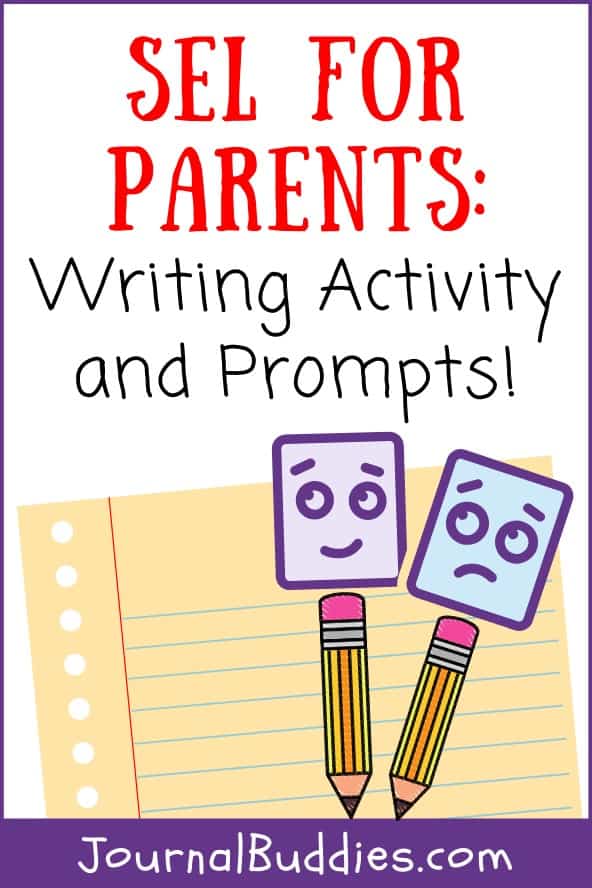SEL for Parents is a Guest Post by Linda Simpson—
Parents are key to a child’s social-emotional learning. Indeed, social-emotional learning is your 21st-century roadmap for improving family life. Parents need to understand the SEL process and yet, there are few places for them to find the ideas to use in family situations.

Learning about emotions, developing empathy, maintaining positive relationships and responsible decision-making all begins at the toddler stage. And later, parents play a key role in partnering with their child’s school SEL programs.
One thing is certain about your child’s future: every day of their lives will include relationships. It all begins with understanding the most important relationship they have – with themselves.
The very first lesson in relationships for a young child begins with what they see in their own family. Your relationship with other family members and friends is a child’s first visual lesson in relationships. Children learn what they live.
On top of that, parents are also their child’s very first social-emotional coaches.
SEL for Parents: Where to Start
Let’s start with ways SEL for parents can help you help your child understand emotions.
We use words like:
- excitement
- anger, and
- fear
and expect our children to know what we mean.
As a teacher, I discovered that young children, very often, didn’t have the language to describe these emotions. (Language gives meaning to emotion.)

SEL Tips for Parents
Let’s begin with excitement. What does that word mean? In education, we use the technique of making connections to explain some ideas. Connecting to real experiences is a powerful teaching tool for parents too.
Ask your child how they felt at their last birthday party or a special holiday. The sensation of butterflies in the stomach is one way to connect them to the emotion. Now they can put words to the emotion.
Helping Kids Understand Emotions & Listening
Understanding their own emotions can help them begin to identify someone else’s emotions. With that, you have a lesson in empathy. Why is empathy important? Empathy is one of our most important relationship building-blocks. Simply put, it helps us understand each other. Empathy means we step outside our personal bubble and connect to another person’s emotions.
Every coach expects their team to listen. The SEL process describes this as active listening. Active listening means putting your phone down, making eye contact, and considering their body language. This will often tell more about your child than their words spoken. If you are a good listener then you are showing your child how to be a good listener.
Let’s Write About It
Now let’s take all this a step further and write about it. We learn by doing. Writing about family life adds to our family story. (And it is a proven therapeutic stress buster.)
For many reasons, writing tends to scare some people. With a little prompting, it doesn’t have to be scary. We pick a starting point and proceed. At it’s best, it is a soothing safe place to be with our thoughts.
Our family lives are rich with stories waiting to be told. We are the most photographed society in history, but it is with our written stories that we can truly flex a little creative muscle. A picture is one image but might not answer the questions who, why, when, or where.
Are you wondering where to start? You can start right here with this writing tip and prompt.
SEL for Parents Writing Tip
Observation is a key element in any writer’s bag of tricks, and we will begin with a little refresh of your observation skills.
All your senses play a key role in any experience and some can often go unnoticed. Begin with what you saw and then consider your other senses.
- What did you hear?
- Was there a sound that added to the visual image?
- Maybe there was a smell you noticed too.
- Finally, was there something you touched or that touched you?
All of it combines to create a vivid multi-sensory picture.
SEL for Parents Writing Activity and Prompts
Now let’s write about the emotions of a family event by applying our ‘sense’ memory.
Step 1: Choose a photo from your file.
(What more do you see in the picture beyond the visual?)
Step 2: While looking at the photo complete the following:
- Start with: I remember …
- Next, connect all your senses to the family event.
- Was there music?
- Was there a certain smell that will forever connect your memory to that event?
- Is there a touch that lingers in your memory from that time?
- Ask other family members what they remember.
Why Do We Write Family Stories?
That’s a great question. We write family stories because we take our stories beyond the frame of a picture. It preserves our memories and history because the words will reach into the future. And it can help us take a little closer look at how we parent.
There are many more ideas linking social-emotional learning to family life and the writing life in my book Commonsense Tips for 21 C Parents.
In my book, each chapter has a Writing Gig connected to the theme of the chapter that encourages the reader parent to become the writer parent.

My sincere thanks to Jill Schoenberg for allowing me to share these ideas with you. Her website is brimming with fun and educational writing prompts for home and school!
Links & Resources
- Journal Prompts for Self-Discovery
- Mindfulness Journal Prompts
- A Parent’s Resource Guide to Social and Emotional Learning
If you enjoyed SEL for Parents: Writing Activity and Prompts, please share it on Facebook, Twitter, and/or Pinterest. I appreciate it!
Until next time, write on…
Sincerely,
Journal Buddies Jill
journalbuddies.com
creator and curator





